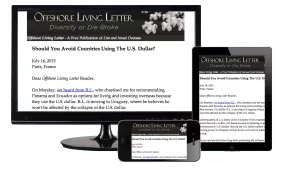
Know When To Hold ’Em…
Real Estate Yield Analysis: Most real estate investments have two profit components to consider: income and appreciation.
Income comes in the form of rents and appreciation comes from increased value over time. Generally, one or the other is the main reason to invest… and it is net yields that I’ve focused on for my investments over the last 10 years or so.
Appreciation will likely come for a rental property, especially the longer you hold it. That means at some point, you should do some analysis on whether or not to sell the property and reinvest the capital or continue on with the same asset.
Over the years, I’ve had conversations with different investors on this topic in different ways. One was very linear.
Let’s analyze these scenarios…
A lady had a rental property in Seattle that she wasn’t sure what to do with. It was generating a good net cash flow of $1,500 a month, but she wanted more cash flow in preparation for her retirement. She was chasing dollars, but wasn’t sure how to figure out what she should do.
The first question I asked her was how much was the property worth at the moment. That answer would get us her current net yield. She estimated it might sell for $250,000. Based on that, the $18,000 a year in net income meant she was getting a 7.2% yield. That’s pushing the high-end of my general 5% to 8% net yield expectation (and experience) with residential rental properties.
Go Offshore Today
Sign up to our free twice a week dispatch Offshore Living Letter
and immediately receive our FREE research report
on how to live tax-free today, while earning up to $215,200!
You can find higher yielding or projected yielding properties at times, but typically, the yields will get pushed down as prices are pushed higher by investors chasing those extraordinary yields. Or, it could be that the risk in that market is so high that the yields have to be high as well.
If you’re talking to someone who has owned a property for a while but bragging about high yields, ask him how he’s calculating his yields. He might be using the original purchase price from five or ten years ago. You need to use the property’s current value and cash flow. In this scenario, her current 7.2% yield was good.
The next question I asked was how the rental market rates were doing, as well as the home values in the neighborhood of the property. Rents and property prices were stable. Therefore, no immediate concern of bringing in less cash or values changing much and losing equity.
That led to the final part of the initial analysis—the calculation for the yield she’d need to replace that $1,500 a month.
Real estate has friction costs… transaction costs.
Selling one 7.2% net yield investment to buy another 7.2% net yield investment will yield you less monthly income simply because you won’t have the same capital to invest after selling the first property.
At a minimum, she was looking at a 5% real estate agent fee on the sales side. On the buy side, she might need to put some money into updating or improving a new property. Capital gains taxes could take a chunk out of investable funds as well, although a 1031 like-kind exchange could eliminate that, but with its own transactional costs.
Sticking with just a 5% agent fee, she’d net $237,500. To get that same $18,000 a year she was getting from the original property, she needed an almost 7.6% yield from the new property.
The margin between 7.2% and 7.6% isn’t that big, and finding an immediate cash flowing opportunity at 7.6% wasn’t likely at the time.
With no other factors at play, the recommendation was to hold the property.
On the other hand, a Portugal apartment I bought in 2015 was throwing off a better than 8% net yield in the first couple of years, dropping to around 6% the last year I owned it.
It wasn’t the drop to 6% that triggered my sell decision, but the fact that the apartment had more than doubled in value. That meant my actual net yield on the current value of the apartment was around 3%.
Of course, transaction costs were less than the value of the apartment in cash in my pocket, and even after real estate agent commissions, attorney fees, and capital gains taxes in Portugal, the net proceeds needed to only earn about 3.5% for me to get the same annual cash as I was from the apartment.
Selling and looking for another investment was the obvious decision there.
Sometimes the decision isn’t as obvious as it was in either of these cases… especially if you still want to own property in the same market in which you’re selling. Fortunately for investors, other markets are always available.
Prices in Lagos were up across the board when I sold in Portugal. Maybe I could have found another property that would have given enough yield to beat the cash flow I was getting from the apartment I sold, but I wasn’t tied to the Lagos market or the Algarve market or the Portugal market.
The key for me was finding more cash flow from the same capital… which I eventually did.
In most markets, rents and purchase prices don’t move up and down in sync. You’ll have to analyze at some point whether your capital would be better off deployed elsewhere.
Go Offshore Today
Sign up to our free twice a week dispatch Offshore Living Letter
and immediately receive our FREE research report
on how to live tax-free today, while earning up to $215,200!
Besides looking at your current yield based on the current value of the property, consider whether or not there is any more short-term appreciation potential in the market (there wasn’t at the time I sold, in my opinion, in Lagos).
Take a look at transaction costs and what you’ll net on a sale.
Take a look at the transaction costs to get into the next property (transfer taxes on the purchase of a property are the big hit).
The hassle factor may play a role in your decision as well. Sometimes just holding on to a property is easier even if you might make a slightly higher return elsewhere.
The flip side of selling to chase a better yield is holding on too long to a good yield as property prices fall… losing you value on the asset even while you’re bringing in good cash flow.
You don’t want to be caught unaware of a market downturn any more than you want to miss out on capturing capital appreciation that is putting pressure on your true net yields.
Even though I focus on the income side for most of my investments right now, it doesn’t mean the asset value side should be ignored.
At the end of the day, real estate is a long-term investment, but one that you should review once a year to make sure you know which direction a market is going.
Stay diversified,
Lief Simon
Editor, Offshore Living Letter




